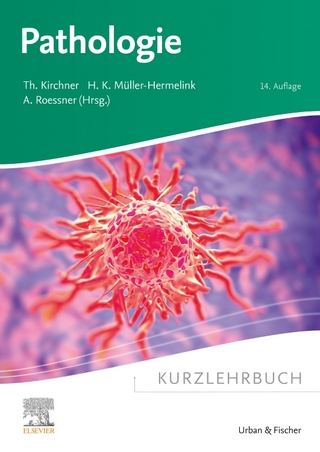
Pathology of Neonatal Intensive Care
Hodder Arnold (Verlag)
978-0-412-43490-7 (ISBN)
- Titel ist leider vergriffen;
keine Neuauflage - Artikel merken
There are many advances in neonatal intensive care in recent years. It has therefore been inevitable that some interventions result in adverse effects and pose a major problem in perinatal medicine. The role of the pathologist is important as they are often the first person to notice adverse effects of therapy. This reference provides pathologists with an atlas covering a wide variety of lesions, including those due to the complications of treatment, as well as due to prolonged survival.
Part 1 Prenatal therapy: maternal drug therapy and the foetus; diagnostic amniocentesis; umbilical cordocentesis; intrauterine transfusion; chorionic villus sampling (CVS); prevention of preterm labour. Part 2 Birth trauma: predisposing conditions; scalp, skull and brain injury; spinal cord injury; breech delivery; other features of birth trauma. Part 3 Skin and subcutaneous tissues: skin lesions related to tubes and lines; topical agents and physical agents; sclerema neonatorum; skin infections. Part 4 Respiratory system (general): direct airway injury; epithelial necrosis of airways; other airway changes; miscellaneous complications of ventilation and intubation; pulmonary edema; spontaneous resolution of hyaline membranes; yellow hyaline membranes. Part 5 Pulmonary complications of assisted ventilation: air leaks and air embolism; persistent interstitial pulmonary emphysema; bronchopulmonary dysplasia and related lesions; surfactant aerosol therapy; extracorporeal membrane oxygenators; pulmonary vascular changes associated with prostaglandin E1; pulmonary infections following bronchopulmonary dysplasia. Part 6 Arterial and aortic lines: umbilical artery lines; aortic aneurysms and infection complicating arterial lines; embolic effects; direct arterial trauma; other arterial lines. Part 7 Venous lines: umbilical venous lines; other venous lines; sequelae of venous thrombi; infections with venous lines; foreign body emboli; exchange transfusion. Part 8 Cardiovascular complications: ductus arteriosus; cardiac scarring and hypertrophy; persistence of effects of ischemic damage; angiographic changes in the myocardium; cardiac puncture; other arterial lesions. Part 9 Parenteral alimentation, hepatobiliary and pancreatic changes: general considerations of risks; liver changes associated with parenteral alimentation; consequences of liver damage; other liver changes; pancreatic lesions; biliary lesions. Part 10 Genitourinary system: renal crystalline deposits; systemic hypertension and renal lesions; other lesions of the urinary tract; testicular lesions; changes in the uterus, vagina and ovary. Part 11 Endocrine organs: pituitary lesions; thyroid glands; parathyroid gland; adrenal gland. Part 12 Spleen, thymus and lymph nodes: splenic lesions; thymic involution; other thymic lesions; lymph nodes. Part 13 Gastrointestinal tract: ischemic necrosis and indomethacin; sequelae of previous intestinal ischemia. Part contents.
| Erscheint lt. Verlag | 4.9.1998 |
|---|---|
| Zusatzinfo | 32 halftone illus, 457 colour illus |
| Verlagsort | London |
| Sprache | englisch |
| Themenwelt | Medizin / Pharmazie ► Medizinische Fachgebiete ► Notfallmedizin |
| Medizin / Pharmazie ► Medizinische Fachgebiete ► Pädiatrie | |
| Studium ► 2. Studienabschnitt (Klinik) ► Pathologie | |
| ISBN-10 | 0-412-43490-3 / 0412434903 |
| ISBN-13 | 978-0-412-43490-7 / 9780412434907 |
| Zustand | Neuware |
| Informationen gemäß Produktsicherheitsverordnung (GPSR) | |
| Haben Sie eine Frage zum Produkt? |
aus dem Bereich


